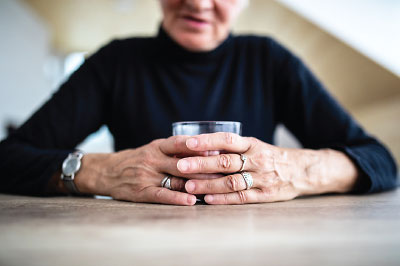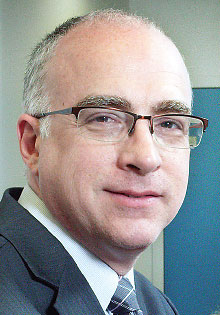Pandemic Creates Challenges, New Opportunities for Treating Patients With Substance Use Disorder
Abstract
People with substance use disorders may be particularly vulnerable to COVID-19, and loss of peer support can be dangerous. Psychiatrists and addiction specialists are finding new ways to engage with individuals to help them progress in their recovery and in treatment.

The current social distancing requirements of the COVID-19 pandemic present unprecedented and worrisome challenges to the delivery of treatment to people with substance use disorders (SUDs). But the situation may also create some positive opportunities, including the embrace of new technologies that could ultimately improve access and delivery once the pandemic ends.
People with SUDs who smoke may be particularly vulnerable to the coronavirus that causes COVID-19 and to respiratory complications if they contract it, warned National Institute on Drug Abuse Director Nora Volkow, M.D., in an article in the Annals of Internal Medicine. Additionally, the social distancing rules have cut off in-person group meetings and other social support systems for people with SUDs and made it more difficult to obtain medications, potentially placing individuals in recovery at greater risk for relapse.
Addiction is often viewed as a disease of isolation, Kenneth Bruce Stoller, M.D., director of the Johns Hopkins Broadway Center for Addiction in Baltimore, told Psychiatric News.

Treatment of addiction often involves encouraging patients to develop positive relationships and engage in prosocial activities with those contacts.—Kenneth Bruce Stoller, M.D.
“As addiction takes hold, people turn more inward and become isolated from social contacts,” he said. “Part of treatment is to open the patient to developing more positive social contacts and specifically doing more prosocial activities with those contacts to build up a social support system. … These are all things that are affected now by COVID-19 in terms of people being forced to isolate.”
Losing access to peer support groups can also lead to a worsening of SUDs, American Society of Addiction Medicine (ASAM) President Paul H. Earley, M.D., told Psychiatric News.
Therefore, Stoller said, “it becomes very important for programs and addiction psychiatrists and addiction medicine physicians to find creative ways to engage with individuals to help them progress in their recovery and in treatment.”
Some adaptations have helped. Residential treatment programs have developed protocols for safety during this time. Most remain open with some changes, such as COVID-19 testing of new patients and social distancing of residents. Many outpatient programs have moved to virtual platforms, as have Alcoholic Anonymous and Narcotics Anonymous, with some success.
Federal rule changes have also eased conditions on the outpatient side. In March, the Substance Abuse and Mental Health Services Administration (SAMHSA) issued guidance allowing stable patients receiving medication treatment for opioid use disorder to take a 28-day supply of their medication home. Patients considered less stable but who a clinician believes can safely handle some take-home doses may receive up to 14 days of their medication (Psychiatric News).
The Department of Health and Human Services also announced in March waiving HIPAA penalties for use of noncompliant technologies, such as Skype and FaceTime, for telehealth encounters with patients during the COVID-19 emergency. And, the Drug Enforcement Administration (DEA) now allows use of telephone evaluations to initiate buprenorphine prescribing.
With New Rules, New Dilemmas
Stoller said that while the SAMHSA rule change has helped a great deal, it has also created new challenges.
On the one hand, “we’ve been able to provide a larger number of take-homes to patients. This was a huge relief knowing patients wouldn’t have to travel back and forth to the program as many times a week and potentially be exposed to people who are infected or infecting others unknowingly. And then there are those who are quarantining and wouldn’t otherwise be able to get their meds.”
On the other hand, he pointed out, “a lot of patients don’t reach the level of stability that we would typically feel comfortable giving them take-homes,” so now the decision of how many take-homes to give an individual patient is far more complicated. “I have to think ‘OK, if this person is still using cocaine on a regular basis but is no longer using heroin because the methadone has been effective, how many take-homes is safe to give the person?’ … We have to use our best judgement, and frankly it’s been somewhat of an educated guess lately as to what to do. … The risk-benefit ratio has really shifted, and it’s not based on any data.”
Another issue, Stoller said, is that although SAMHSA and the DEA now allow for doorstep delivery of medications for people who are quarantined at home, the structure of programs doesn’t support staff being out in the field delivering medications all day. So now, opioid treatment programs (OTPs) are working with states and localities to try to design systems that would enable that delivery.
Examples being explored in Baltimore include use of a core group of city OTP staffers, use of existing delivery services, or dedicated funding for use of bonded courier services.
Technology Facilitates SUD Management
Despite the many challenges, technology is proving extremely useful in the SUD treatment world. Earley runs several group sessions a week, both support groups for people in recovery and psychotherapy sessions, all now through telemedicine. “People are joining these groups who wouldn’t normally join groups for support and psychotherapy. … The upside is people are saying ‘Wow, this is really helpful. I don’t have to drive somewhere. It feels a little odd looking at each other on a computer screen or on my phone, but I’m getting some help.’”

“A pandemic like this ... brings out the patients who may [have been] reluctant to talk about their addiction disorder.”—Paul H. Earley, M.D.
This new reality, Earley said, “is forcing us to consider telemedicine as an industry. I think [telemedicine] is going to help extend the efficacy of addiction treatment in a significant way long after COVID-19 is gone.”
Earley uses both Zoom and UberConference for group sessions with patients. He said he prefers the latter for smaller meetings, but feels Zoom is better for larger groups.
Stoller is also using Zoom and sometimes FaceTime for individual therapy. In addition, Doximity now has a video platform whereby the physician can send the patient a link to click on and go to a video chat. The service also has a dialer function where the physician can call the patient from home, but the number that shows up is the physician’s office number. In hospitals, electronic health record systems such as EPIC also have their own audio and/or video platforms to connect with patients, he pointed out.
Another type of technology that may help resolve the take-home dilemma is an automated electronic pill dispenser called MedMinder. Stoller’s OTP and two others in their collaborative have begun using it to dispense methadone. “Rather than simply giving a large number of take-home medication doses to patients in whom we may not have a lot of confidence in their long-term stability yet, we’re able to load those doses into a pill dispenser that unlocks each day’s dose one at a time at a pre-programmed time of day.”
The boxes are leased at about $60 to $65 a month. The monthly fee is waived for patients who obtain their medications from a pharmacy that uses MedMinder boxes; patients pay only the medication copay.
Stoller is working with Behavioral Health Systems Baltimore and the Maryland Behavioral Health Administration to identify state and local funding to enable pilot testing of the boxes in a few OTPs in Baltimore City. His faculty group is also working on setting up a multisite clinical trial to “add to the evidence base for this technology when used in OTPs.”
“So if there’s any silver lining here, I think this situation is driving a lot more development of technologies that can be used to provide other methods of patient care and safety,” Stoller said.
Additional Resources
Earley said that since the COVID-19 lockdown began, he’s been receiving “more and more calls from psychiatrists and colleagues in other areas of medicine” seeking assistance with how to treat patients with SUDs.
There are several resources psychiatrists who may be seeing new or established patients with SUDs but who aren’t addiction specialists might find useful:
Providers Clinical Support System: The site provides evidence-based training and resources for treating opioid use disorders. These include trainings to prescribe buprenorphine and COVID-19 resources.
ASAM COVID-19 Resources: Resources on the site include information about access to buprenorphine, opioid treatment care, and telehealth; adjusting drug testing protocols; inpatient and outpatient infection mitigation; medication formulation and dosage guidance; and national and state guidance. The site also has a searchable member database to find an addiction medicine specialist for consults or referrals.
APA Practice Guidance for COVID-19: APA has created a webpage of the latest guidance from the government at both the federal and state levels. The page includes information about working with patients with substance use disorders.
Earley said that one thing he’s noticed is that “a pandemic like this also brings out the patients who may [have been] reluctant to talk about their addiction disorder … I don’t quite know the causation, but people are talking more about their stressors and being a bit more open about what’s troubling them. SUDs are diseases that live in secrecy and shame. If we can eliminate that, to even a small degree, we’re going to get more people accessing needed services, which is a win.” ■



